An Adriatic Crush
As record numbers of visitors flock to sea-side towns in Croatia and Montenegro, what does that mean for the coast – and beyond?

Crossing the short bridge that leads to the Pile gate, the thick stone walls of Dubrovnik’s old town rise above you. An archway, crowned with the talismanic figure of St. Blaise, the city’s patron saint, corrals you and your six-thousand-or-so fellow visitors slowly through the ancient fortifications. Pressed shoulder-to-shoulder you descend the steps, dodging deftly around the ponderous draggers of suitcases and the distrait checkers of maps, towards another archway that leads into the city proper. Passing through, the neck of the bottle is breached; the crowd spill left, right, forwards, pouring onto the polished stone streets, gawping upwards at the city walls, unfurling enormous town maps, swinging their selfie sticks as they go.
Looking up, it’s easy to see why so many have come here, to Croatia’s most-visited city. Stretching out from the Pile gate is Stradun, the broad central street that runs the breadth of the old city, and with it a sea of white. Underfoot, the cobbles have been worn shiny-smooth by the feet of generations; they run up to the uniformly beautiful, neatly proportioned stone buildings that line the street for its length. In ancient times, Stradun separated the Latin Ragusa from the Slavic Dubrava, two initially separate towns with two distinct populations that eventually absorbed one another to form Dubrovnik. This twin heritage – Latinate, mercantile, Western- and seaward-facing on the one hand; Slavic, agrarian, Northern- and Eastern-facing on the other – underpins much of Dubrovnik’s history, and at various times each its two different heritages have held greater or lesser sway. Walking down Stradun, though, the feeling is overwhelmingly of the Latin half; this could be Vicenza or Venice, an Italian city made fat with merchant income, reflecting back at you its immense power, made inescapably tangible in the smoothness of its stone, the intricacy of its carvings, the beauty of it all.
Everywhere you turn, as the throng of visitors presses you forward, the same beauty beams out at you. The Zvornik clock tower, which frames the view at the end of Stradun, stands next to the delightful seventeenth-century Baroque Church of St. Blaise. Mere metres onwards is the Gothic-Renaissance Rector’s Palace, its Corinthian colonnade matched above by Gothic-arched windows that must have been decadently large in their day. Next door again is the Baroque Cathedral, its airy dome rising above a gloriously bright and open crossing. This embarrassment of architectural riches exists in a small corner of the old town, but it is replicated across its length and breadth; it’s difficult to think of a town anywhere in the world that has such consistent and densely packed beauty. And so, inevitably, comes the swelling of visitors that drives out locals, drives up prices, attracts property speculators, and forces the town into a twin, seasonal existence: excessively crowded in summer, ghostly quiet in winter.
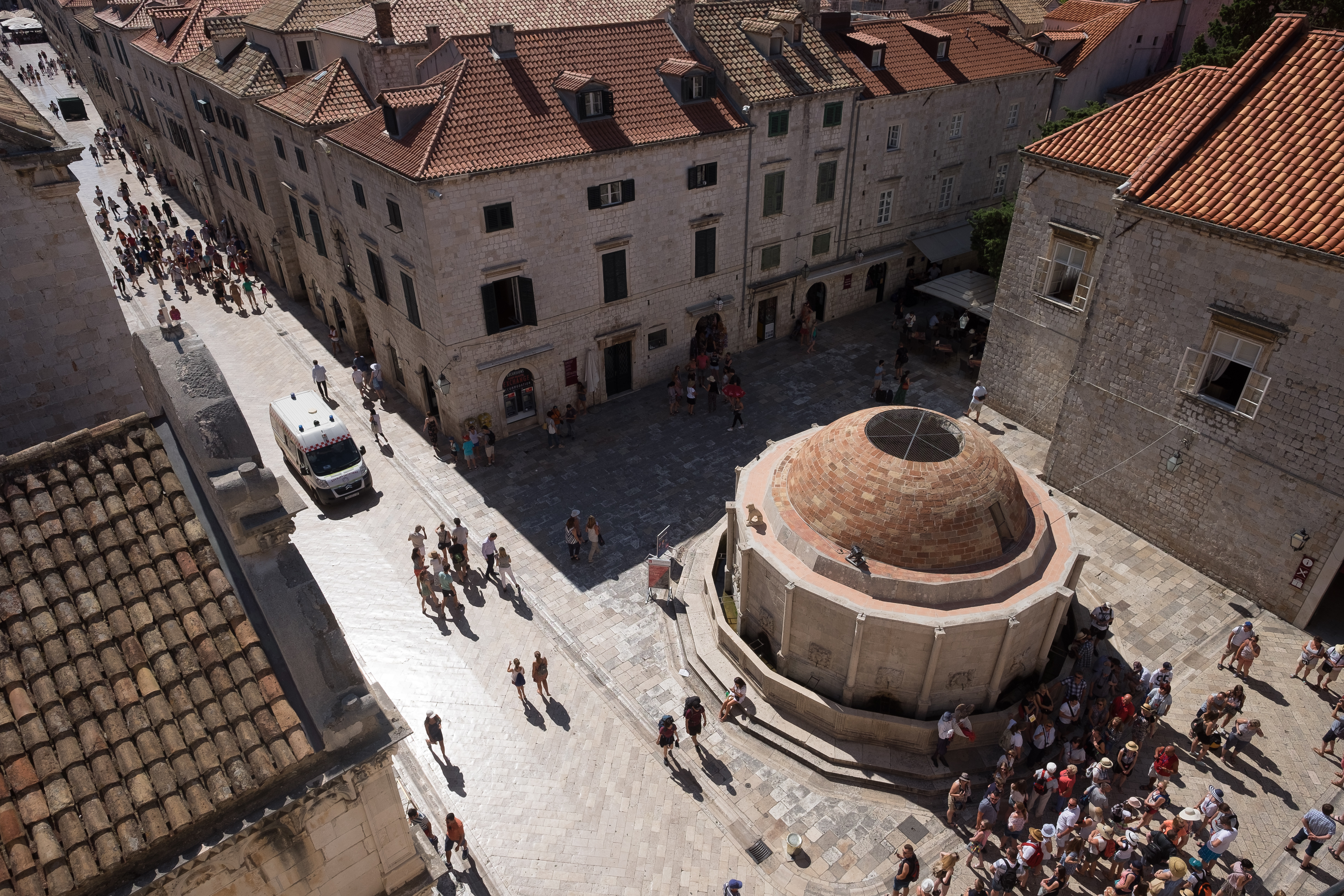
This popularity is not new, of course. In 1979 UNESCO declared the whole Old Town a World Heritage Site. Throughout the 1970s and 1980s, tourists flocked in their thousands to the sunny shores of the Adriatic in what was then the Socialist Federal Republic of Yugoslavia. Neither was this generation the first; they were continuing a tradition that began with the establishment in the 1870s of hotels and spas in what was then Austro-Hungarian territory.
But it remained less popular than destinations elsewhere in the Mediterranean, never rivalling the Côte d’Azur among wealthy travellers nor the Costa del Sol among the more budget-conscious. Most crucially, though, the 1980s tourist boom was followed in short order by the collapse of Yugoslavia in 1991. The decade-and-a-half that followed saw bloody inter-ethnic conflict, authoritarian rule of the successor states, particularly under Franjo Tuđman and Slobodan Milošević, and general corruption and instability. The tourism sector collapsed with Yugoslavia, and it wasn’t until the mid-2000s that it began, falteringly, to recover. But recover it has; boosted first by cruise ship visits, then by package tours, and most recently by its appearance in HBO’s Game of Thrones,1 Dubrovnik now has so many visitors that the gates will soon be monitored by CCTV; so concerned are UNESCO at potential damage that, if more than 8,000 tourists are in the town at the same time, the bridges will be drawn shut until enough visitors have left. Dubrovnik seems, at high season at least, to be overflowing.
Sixty kilometres along the Adriatic coast to the South-East of Dubrovnik, vertiginous cliffs rise up almost directly from the sea. The water is almost fantastically clear, revealing the piebald sea floor, its bright stone marred with dark sea-grass. The terrain above is starkly arid, doubly so in July, bare limestone speckled with scrub; what little rain there is drains quickly through the porous rock, leaving the surface parched. Dotted around the bay, terracotta-roofed hamlets spill upwards from the shoreline, neighbour competing with neighbour for the best view.
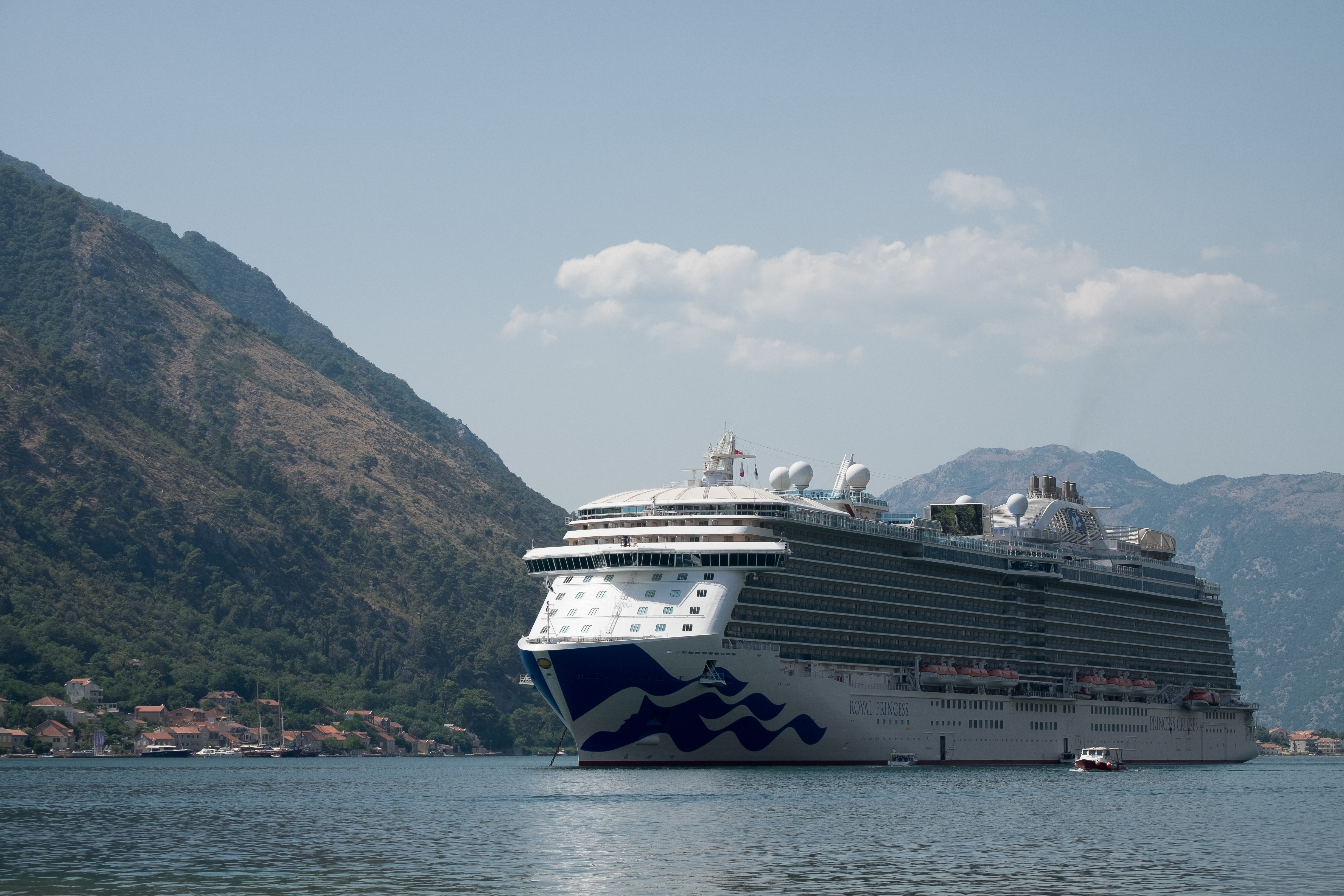
A horn sounds below. An enormous ship moves slowly into view, seeming almost to fill the bay; it positions itself delicately in the mouth of the channel, and eases its way between the cliffs. It looks like a cheap special effect in a film, the scale all wrong, a too-large ship alongside a tiny, papier-mâché landscape. Making its way around the bay, it eventually drops anchor just outside the walls of an old medieval town. Reaching upwards sixty-six metres above the water line, it is a town in its own right, and it dwarfs the ancient stone structures below it. Down at the water line, portals open and passengers disembark from the mothership onto taxi boats that ferry them endlessly to and from the shore.
The town is Kotor, the historic gem of Montenegro’s Kotor bay. As Dubrovnik’s overcrowding reaches dangerous proportions, and with berths for cruise ships limited, visitors looking for Adriatic splendour have had to look further afield. And Kotor – just 60 kilometres away from Dubrovnik as the crow flies – is the obvious next choice. Each day a new cruise ship makes this journey through the bay, and its thousands of passengers disembark for their collective traipse around the town. This particular ship is large even by cruise ship standards; it’s the Royal Princess, flagship of the Princess Cruises fleet, 330 metres long and with space on board for 3,600 passengers; it will be replaced tomorrow by another, and another the day after that.
Wandering around the old town, cruise-ship passengers are everywhere, recognisable by the gaudy coloured badges that identify which group they belong to. They gather outside churches; they flock to the restaurants and bars that line the narrow streets and fill the countless squares. The more intrepid visitors brave the heat and trek up the Ladder of Cattaro. This is the path that, through a series of seventy switchbacks, climbs up from sea level to 940 metres, eventually reaching the high pass at Krstac with its views across the whole bay and out to the Adriatic. But most visitors are content to absorb the atmosphere in the town itself, especially in July.
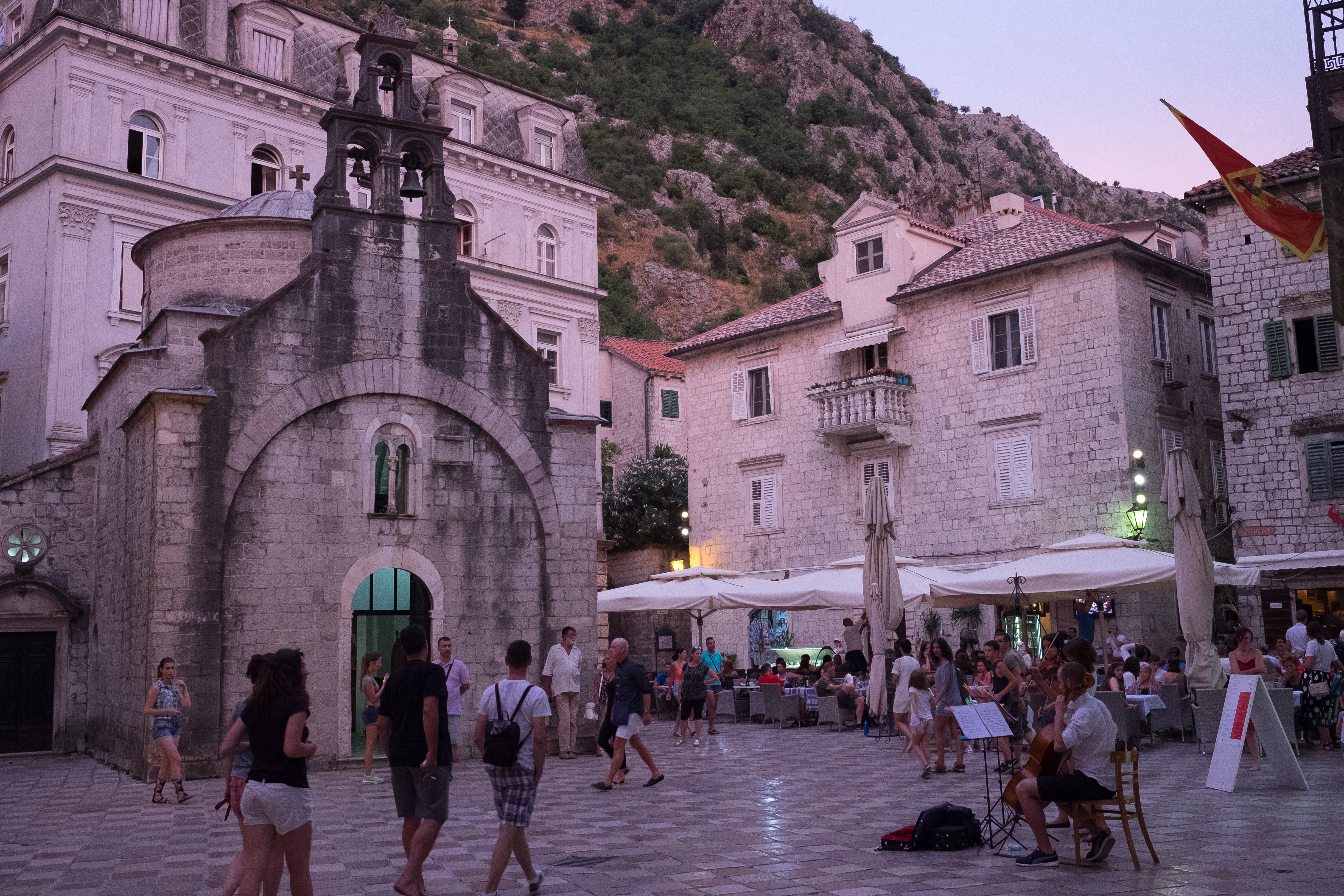
Two large churches predominate in Kotor, one at the northern end of the old town and one towards the southern.2 The first is Orthodox, the church of St. Nicholas. Constructed in 1909, its main dome dominates Kotor’s skyline, and its facade is draped with the flag of the Serbian Orthodox Church – the Slavic tricolour emblazoned with the Serbian cross, bright yellow with its four firesteels. Inside, a small nave leads to the ornate iconostasis, each icon framed by Corinthian columns resplendent in gold, everything focussing the eye towards the dark mahogany holy doors at the centre. The effect, as with all Orthodox churches, is of awe; the iconostasis, hiding the mysteries of the sanctuary from the lay congregation, seems somehow to preserve the ancient and exclusive mysteries of Christianity.
The second – and perhaps grander – is the Catholic Cathedral of St. Tryphon, built in the twelfth century. That the Catholic church is the older and more prominent reflects the area’s heritage; there were many ethnic Croats – of the Catholic faith – here in the past, and Kotor was governed as part of Dalmatia as recently as the early twentieth century.3 The church itself is broadly Romanesque, but was repaired in a somewhat Baroque style following the devastating earthquake of 1667 that also profoundly affected Dubrovnik. The church stands over a quiet, open square; a balcony, framed by the two enormous bell towers, overlooks the square and provides a vantage point for tourist photos. Around the square, umbrella-sheltered restaurants ply their trade, doing brisk business with their mist-spraying fans and English-language signage.
Kotor is crowded, but it’s positively empty compared to Dubrovnik. Its location further inland, its comparative lack of easy airport access, its being in less-fashionable Montenegro rather than à la mode Croatia; all these things combine to make it, while not quite off-the-beaten-track, slightly less popular than Dubrovnik. But the tide is turning. Visitor numbers doubled between 2006 and 2016; cruise ships, once a rare sight, are now an everyday occurrence. As Dubrovnik gets more crowded, more and more people are spilling over the border and into Montenegro.
Out of the North-West corner of the bay of Kotor, the Nikšić road rises steeply, linking Montenegro’s second-largest city with Croatia and the coast – but also with Bosnia. The border between Montenegro and Bosnia is natural and formidable: a spur of the Dinaric Alps shoots southwards towards the coast, its almost 2,000-metre peaks scored through with only a handful of border crossings along its 300 kilometre length.
The Ilino Brdo border crossing, leaving Montenegro, is little more than a shed; as soon as the disinterested border guard waves you through, the road surface crumbles into nothing, the tarmac utterly destroyed. Perhaps just roadworks, perhaps a sign of having travelled backwards somehow; you worry that the roads might be this poor from here onwards, that you’ve chosen the wrong crossing. Passing through the second crossing into Bosnia proper, the road surface reassuringly returns, and an incredible vista opens up; the road wends downwards through the hills and meets the river Trebišnjica, gloriously wide here having passed through Lake Bileća and the dam at Grančarevo.
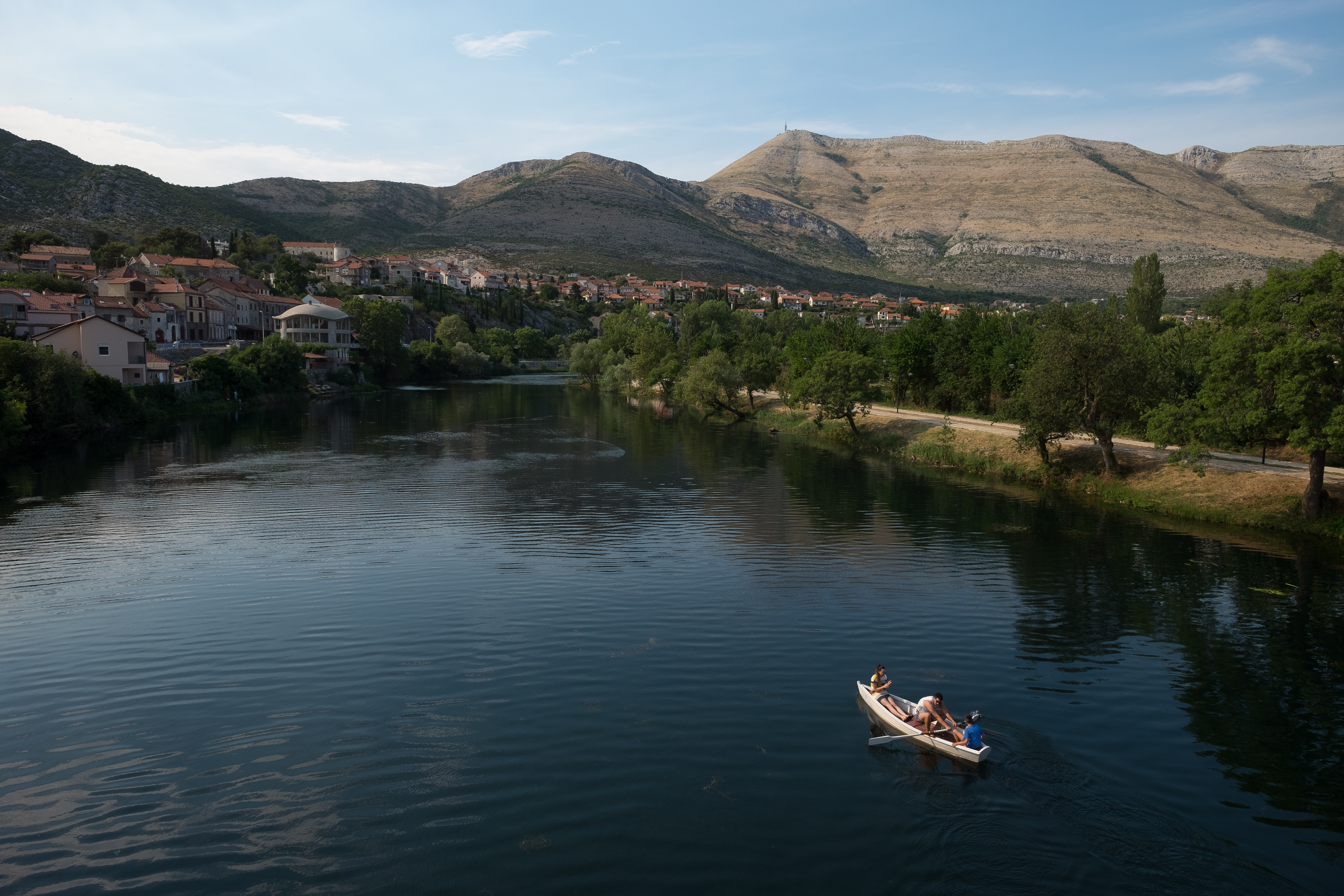
The road runs alongside the river until both reach Trebinje. Nestled in the hills just 45 kilometres from Kotor and just 20 from Dubrovnik, the town sits alongside the river as it makes its way through several sharp meanders. As a result, and because of the surrounding hills, there’s no clear view along the river, no single centre; turning a corner consistently surprises. Rounding one such bend, you’re gifted with a view of Trebinje’s undeniable gem: the 16th-century Arslanagić bridge, a graceful stone structure. It reaches out across the river in two arched spans, impressing – as the many Ottoman bridges in Bosnia generally do – with its economy of material, its lightness, its simplicity. At first the location seems strange: it’s not in the centre of the town, but instead links two rather unremarkable and modern-looking suburbs. But that’s because it wasn’t built here at all; it originally crossed the river ten kilometres further upstream. Its original location is now underwater, having been flooded by construction of the Grančarevo dam in the 1960s, and the bridge was moved here brick by brick.
The graceful bridge is not the only legacy of Ottoman rule here, which lasted from the mid-15th century until 1878. The heart of the city is still the walled Ottoman old town beside the river. Walking through the narrow streets of the old town, one is struck by the sheer sleepiness of the place. There are bars and cafés, but almost all are empty; few people walk the streets, and restaurants lack the practised hawkers that bedevil tourist towns. The presence of two mosques reminds you that you’re in Bosnia – a majority Muslim country – but doesn’t tell the full picture: Trebinje was home to six thousand Muslims in 1991, but just a thousand today. The Muslim population fled during the 1992–95 war, largely as a result of conscious ethnic cleansing; a fraction have returned, but the damage has been done.
Trebinje today is palpably a Serb town. At its centre, two sleepy squares sit next to each other, both shaded gently with large trees that form a complete canopy, dulling the edge of the 35 degree heat and reducing the blazing sunlight to a pleasant dapple. Locals chat in groups over coffees; there is a murmur of conversation, but the atmosphere is relaxed. Fifty metres away, though, a war memorial stands proudly, its stone column raised like a sword into the air. It commemorates the “defenders of Trebinje” – the same Serb forces that forcibly expelled the Bosniak population and coordinated, from their base in the city, the bombing of Dubrovnik. The Bosnia and Herzegovina flag can be seen nowhere; instead, the flag of the Serb-dominated Republika Srpska is ubiquitous.
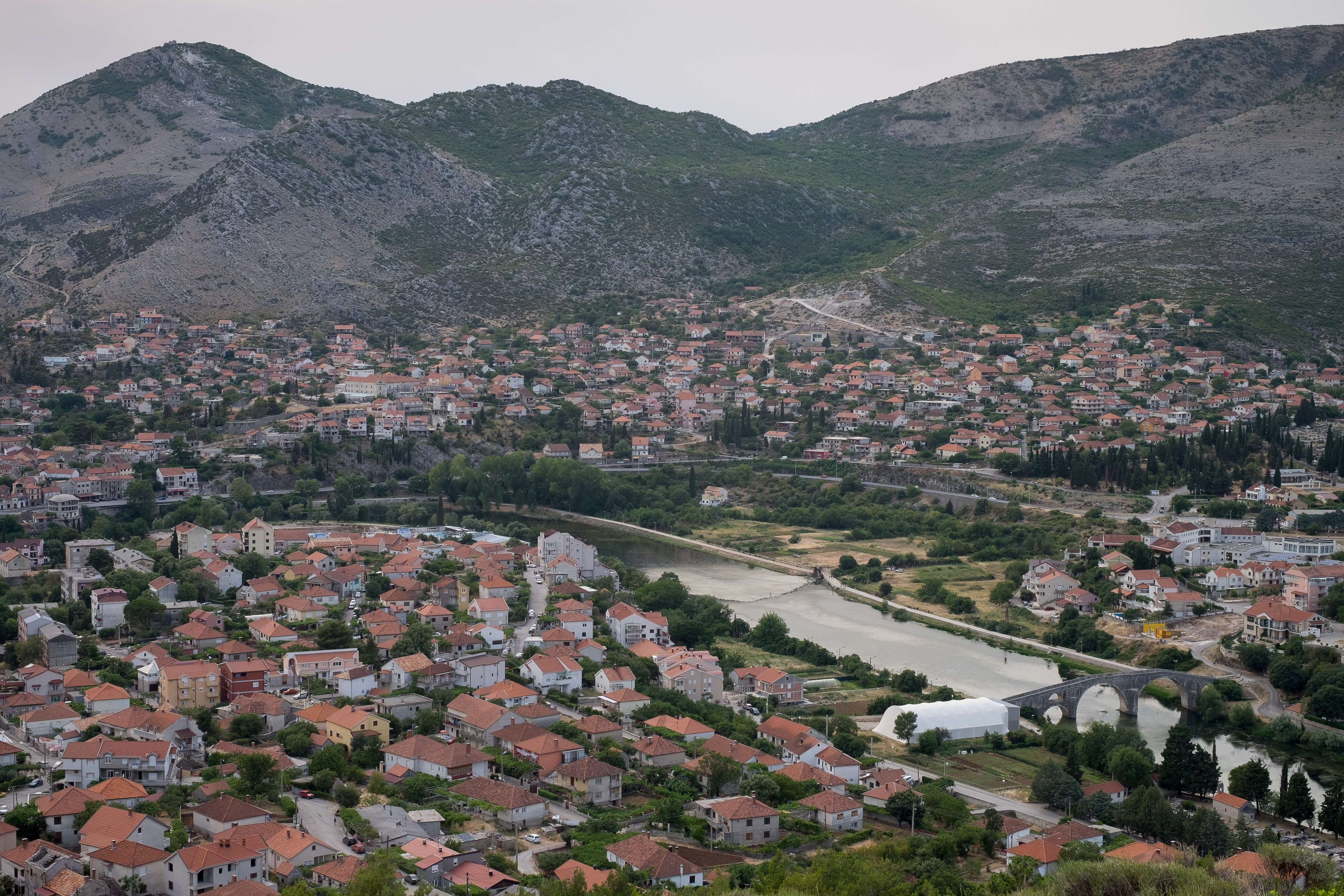
But Trebinje’s wartime past, violent as it was, is now as distant as Dubrovnik’s. The town today is beautiful. To the east of the town, atop a hill, sits the Hercegovačka Gračanica monastery, a squat structure of pale yellow stone and red brick, built in the year 2000, a smaller imitation of the ancient Gračanica monastery in Kosovo. It surveys the town below, looking across to the stony ridge that shelters it from the North. The cypress-filled gardens are well-tended; fountains burble gently, and an amphitheatre overlooks the river and the Ottoman bridge below. It exudes the deep calm that somehow only a religious setting can provide; looking out over the city and the open plain beyond, it seems possible to forget.
Of all the Yugoslav successor states, Bosnia inarguably fared the worst. Its war for independence was, because of its large Serb population, the bloodiest and most protracted; the final settlement of the war left it divided in two, largely along the frontlines of the war, split into the Serb-dominated Republika Srpska and the multi-ethnic Federation of Bosnia and Herzegovina; its central government is weak and frequently wracked with inter-ethnic politicking. Croatia, meanwhile, stabilised relatively quickly after its own war; Montenegro, untouched by conflict, had only its messy divorce from Serbia to contend with. Both states were able to move quickly past the 1990s; Bosnia hasn’t had it so easy.
Just as economic and political progression has been unevenly distributed in the last twenty-five years, so too are visitor numbers; and with tourism forming twenty per cent of Croatia’s economy, the two effects are inescapably linked. Tourists have flocked to uncomplicated, untainted Croatia and Montenegro; they’ve stayed away, largely, from Bosnia, with all its complexities. And so the enormous economic benefits have passed it by, and the longer that continues, the further back Bosnia will be held.
Walking through Dubrovnik’s old town, or driving around the Bay of Kotor, it’s easy to think that it is the destiny of all interesting places in this region – like in the rest of the Mediterranean – to become overrun with visitors, restored to a perceived era of greatest prestige and then preserved artificially, as if in aspic, for the admiring crowds. Perhaps that’s true; perhaps one day the streets of Trebinje will be as busy as Kotor’s, its mosques restored, queues mounting up outside the monastery, the old bridge collapsing under the weight of tramping tourist feet. But for now, most of Bosnia remains relatively undiscovered, unchanged by tourists but with their benefits denied to it. It’s their loss; but it’s Bosnia’s too.
-
An estimated 80,000 tourists a year visit Dubrovnik solely because of Game of Thrones, almost ten per cent of all visitors; the city is filled with shops hawking GoT-themed merchandise, and there are tours of the city themed around the show. ↩
-
For further reading, Cannundrums has written extensively on Kotor’s churches. ↩
-
An example of Kotor’s mixed religious heritage, and the shift that took place, is St. Luke’s church next to St. Nicholas’s; originally Catholic, it was given over to the Orthodox community in the 17th century on the condition that a separate altar was retained for Catholic use; by 1812 the Catholic population had declined to the extent that even that was no longer used, and today it is solely Orthodox. ↩